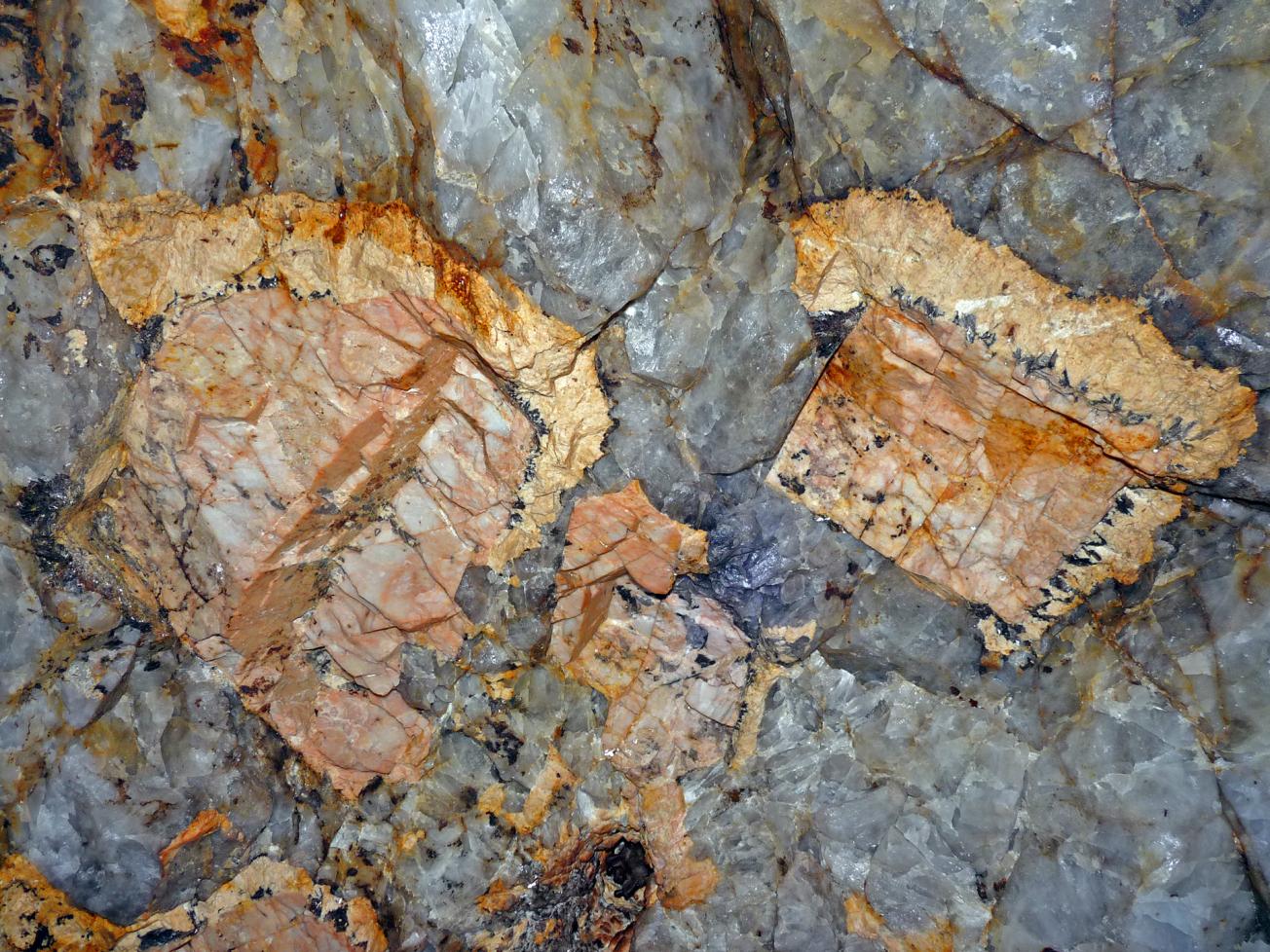
Pegmatites are rocks containing minerals (such as lithium) that are used for green technologies (e.g., lithium batteries for electric vehicles) (Haute-Vienne, 2015).
© BRGM - J. Duron
We like to know where our food comes from, be it the controlled designation of origin (AOC) of a particular cheese or wine, or the label indicating the origin of fruit and vegetables, or the fair-trading stamp on a bar of chocolate or a packet of coffee. But while we are increasingly aware of the environmental and social impact of our electronic devices (concerning water scarcity, the carbon footprint, working conditions, respect for indigenous peoples, etc.), we still don’t know where the lithium in our batteries comes from and cannot therefore ensure sustainable sourcing. This makes it one of the most problematic components in modern battery production.
BRGM has developed a geochemical approach for “fingerprinting” the lithium used in our batteries. This ensures traceability while potentially offering guarantees of social and environmental sustainability in lithium extraction.
Lithium, the new “white gold”
Lithium is a key component in the rechargeable batteries used for portable electronic devices (tablets and cell phones), electric transport (hybrid and electric vehicles, electric scooters and bicycles) and in the stationary energy storage technologies that are essential for developing intermittent renewable energy. In other words, “lithium salts” are one of the cornerstones for a low-carbon energy transition.
As the demand for lithium grows, so will the environmental and social impact of mining, and the expectations expressed by consumers looking for guarantees on the origins of lithium and the efforts deployed to reduce its environmental and social impact.
A complex supply chain
Battery manufacturing has a complex supply chain comprising many different stages that are often carried out in different locations and countries: mining, extraction metallurgy, purification, the synthesis of cathode active materials, the manufacture of battery cells and the assembly of battery packs.
The complexity of this supply chain makes it difficult for end-users to ensure that the lithium is sourced in a responsible and sustainable way.
Lithium “fingerprinting”
To help control and certify the origin and sale of lithium, BRGM has developed an analytical method based on lithium isotope analysis. Lithium has two stable isotopes (isotopes are variants of the same element, distinguished by their mass), both of which are found in lithium samples. However, their proportion varies depending on the ore and, in particular, the physical and chemical conditions under which it was formed.
In most cases, this 'fingerprint' is still present when the lithium reaches the batteries in our cars and phones. In other words, we can find out where the lithium in our batteries comes from by conducting an isotope analysis.
Towards the certification of a responsible and sustainable lithium supply chain
Against a backdrop of government efforts to boost battery production in Europe, and to defend sustainable and responsible battery production, we need a way of certifying the lithium we use.
The most crucial aspect for lithium will be to develop a reference database containing the complete, updated isotopic signatures of the various products available on the market. This database will be incremented with information on the mining of new deposits or the development of new extraction and purification processes. To do this, it will be necessary to work with the companies mining and producing lithium salts in order to assess the signature of their products. This collaboration between public research and industry players is an essential first step in the development of a responsible and sustainable lithium supply chain.







